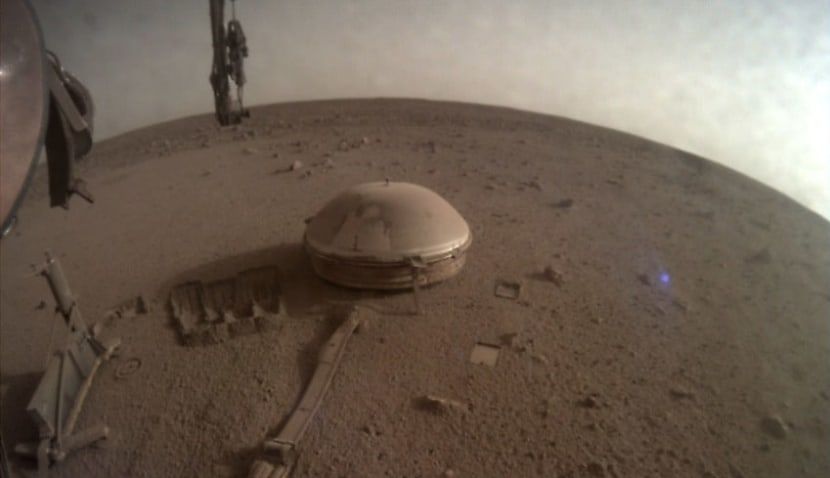
Prior to losing power, the InSight lander sent one last image that accompanied a tweet from the lander with the message “My power’s really low, so this may be the last image I can send.”
“Don’t worry about me though: my time here has been both productive and serene. If I can keep talking to my mission team, I will – but I’ll be signing off here soon. Thanks for staying with me,” the message went on to say.
The messages were posted to the NASA InSight Twitter account, which has tweeted in the first person as the lander for the duration of the mission. In reality, the account is managed by the NASA science team on Earth.
The account gained popularity over the course of the lander’s mission, becoming well-known for posting “selfies” of the vehicle in action on Mars and posting heartwarming “postcards” sent by citizens across the Earth.
NASA provided an update on the condition of the lander on 2 November, explaining that the rover’s lifespan on the planet was coming to an end due to a significant dust build-up on the lander’s solar panels.
“The spacecraft’s power generation continues to decline as windblown dust on its solar panels thickens.
“The end is expected to come in the next few weeks,” NASA said in the update.
The statement from NASA accompanied a final first-person update from InSight as well.
“I’ve been lucky enough to live on two planets. Four years ago, I arrived safely at the second one, to the delight of my family back on the first. Thanks to my team for sending me on this journey of discovery. Hope I’ve done you proud,” it said.
Its hopes were not in vain, as it certainly did NASA proud. The small lander accomplished a significant amount during its time on Mars, helping to unlock the secrets underneath the surface of the Martian planet.
Since landing on the planet in 2018 near to the equator on the Elysium Planitia volcanic plane, InSight captured seismic readings of over 1,300 quakes on the planet.
InSight was so successful in fact that it completed all of its primary scientific goals by the end of 2020, with the mission being extended for a further two years.
In addition to its work observing “Mars quakes” it also took a series of geologic excavations and was able to gather data about critical information, including the interior layers of the Red Planet and its liquid core, the magnetic field of the planet and a wide range of weather data.

Liam McAneny
Liam McAneny is a journalist who has written and edited for his University International Relations journal. He graduated with a Bachelor of Arts (International Relations) and Bachelor of Laws from the University of Wollongong in 2021. He joined Momentum Media in 2022 and currently writes for SpaceConnect and Australian Aviation. Liam has a keen interest in geopolitics and international relations as well as astronomy.
Send Liam an email at: [email protected]
Receive the latest developments and updates on Australia’s space industry direct to your inbox. Subscribe today to Space Connect here.












